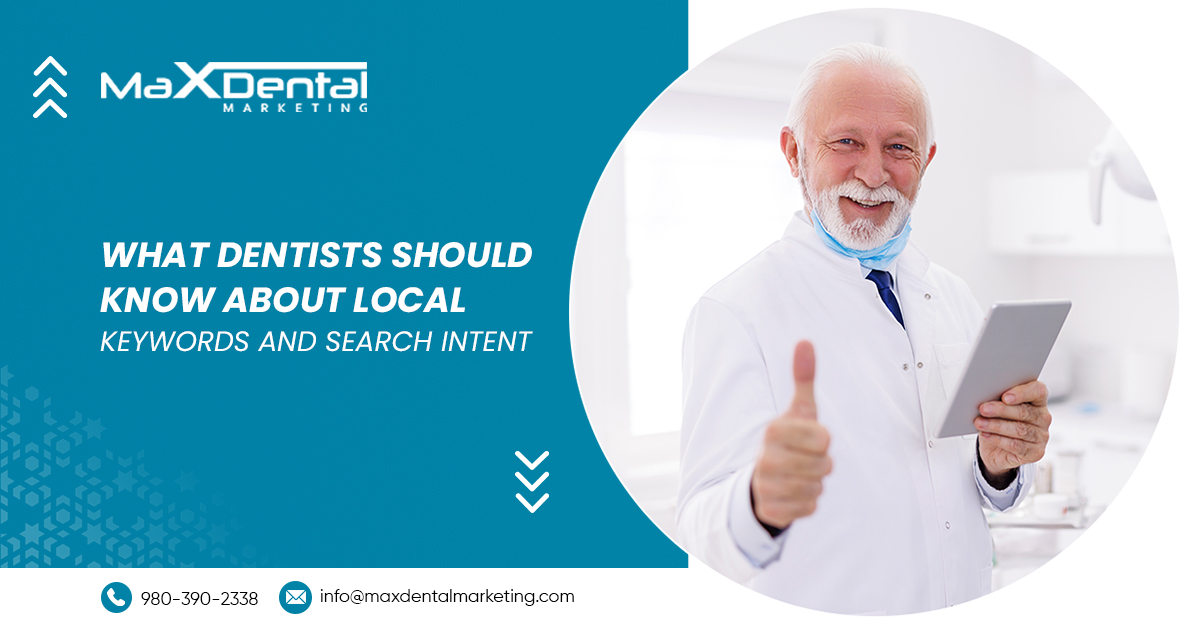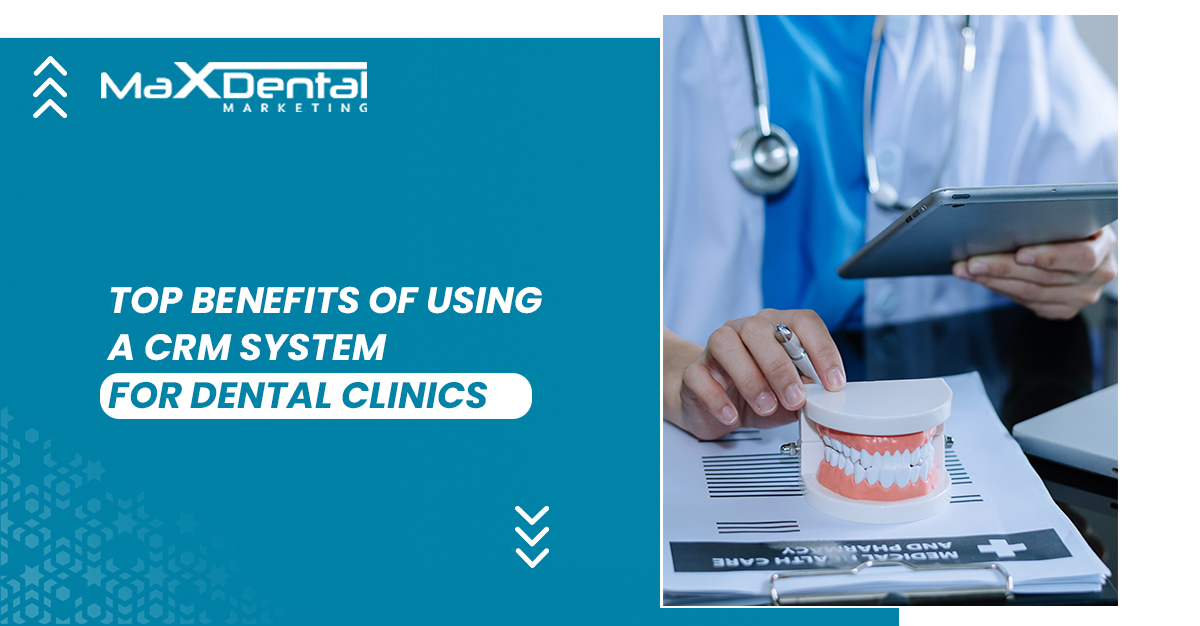If you’re a dentist trying to attract more patients in your area, just having a great website isn’t enough anymore.
The real game-changer is whether your practice shows up when people in your city search for things like “emergency dentist near me” or “teeth whitening in [your city].”
That’s where local SEO for dentists comes in.
It’s all about ensuring your practice is found by the right people, in the right place, at the right time.
Two big things boost your visibility online: local keywords and search intent.
When used together, they help you connect with people who aren’t just browsing—they’re ready to book an appointment.
Here, we’ll explain local keywords and search intent and how both play a huge part in digital marketing for dental practices.
Let’s dive in and turn searches into new patients.
What are Local Keywords?
Local keywords include a specific geographic location—like your city, neighborhood, or landmarks.
For example, instead of someone just Googling “teeth cleaning,” they may search “teeth cleaning in Scottsdale” or “dentist near Central Park.”
These keywords show that the person isn’t just looking for information—they’re looking for nearby services and probably ready to take action.
In the world of local SEO for dentists, these keywords are gold. They help your practice show up for people already in your area and actively looking for dental care.
And since most patients won’t travel far for routine dental visits, focusing on local keywords makes a lot more sense than trying to rank for broad, competitive terms like “best dentist.”
In short, if your digital marketing for dental practices doesn’t include local keywords, you’re probably missing out on nearby patients searching for precisely what you offer—right now.
What is Search Intent, and Why Does it Matter?
Imagine someone Googles “How to stop a toothache at home.”
Imagine someone else searching for an “emergency dentist open now in Houston.”
These two people are looking for entirely different things, even though both searches are about tooth pain.
That’s what search intent is all about: understanding the reason behind a search.
There are four major kinds of search intent:
Informational – Looking to learn (e.g., “what causes gum disease”)
Navigational – Trying to find a specific place or brand
Transactional – Ready to take action (e.g., “book teeth cleaning”)
Commercial – Comparing options (e.g., “best Invisalign dentist in Austin”)
For dentists, transactional and commercial intent are where the magic happens. That’s where potential patients are ready to call, book, or visit.
Even great local keywords won’t deliver results if your digital marketing for dental practices doesn’t align your content with the right search intent.
Understanding search intent is as important as choosing the keywords for dentists in local SEO.
When you match the two correctly, your practice becomes the obvious choice in your area.
Matching Local Keywords with the Right Search Intent
Using local keywords is smart, but using them with the right intent brings in qualified patients.
It’s not enough to show up in search results; you need to show up for searches that reflect what your ideal patient is looking to do.
For example, someone searching “how to prevent cavities” might be researching.
But someone searching “affordable cavity filling in San Diego” is likely ready to book a visit.
Both may involve dental care, but the second one shows clear transactional intent—and that’s where your website should shine.
When working on local SEO for dentists, aligning keyword strategy with what the searcher wants is critical. If your content doesn’t match their intent, they will leave your site and head to a competitor’s.
The ideal practice is to combine location-based keywords with action-oriented intent.
Try targeting phrases like:
“Same-day crown dentist in [city]”
“Pediatric dentist accepting new patients near [neighborhood]”
These are high-intent local searches that can quickly turn into real appointments.
How to Find the Right Local Keywords
Finding the right local keywords doesn’t require guesswork—it just takes digging and the right tools.
A good starting point is Google’s Autocomplete feature. Type “dentist near…” and see what Google suggests. Those suggestions are based on what people in your area are searching for.
You can also use free tools like Google Keyword Planner and Answer the Public or paid platforms like SEMrush and Ahrefs.
Search keywords that include your city, neighborhoods, or landmarks, such as “Invisalign near Greenlake” or “dentist in Downtown Miami.” These terms help you stand out where it matters most: in your own backyard.
Want another great tip?
Listen to your patients.
What words do they use when they call your office or leave reviews? Their language can offer goldmine keyword ideas that feel more human and less robotic.
If you’re serious about digital marketing for dental practices, you need a steady pipeline of patients from local searches.
That’s where local SEO for dentists starts—finding keywords that match what nearby people are typing when they need a dentist.
How to Use These Keywords Across Your Website
Once you’ve compiled a solid list of local keywords, the next step is to use them strategically. Don’t just sprinkle them randomly. Focus on placing them where they count: your homepage, service pages, location-specific pages, and blog posts.
Let’s say you offer emergency dental care in Seattle.
Your service page headline might be: “Emergency Dentist in Seattle – Same-Day Appointments Available.”
Use keyword variations throughout the page, especially in headers and image alt text.
Also, optimize your title tags, meta descriptions, and even your Google Business Profile to include these local terms.
That’s a key move in local SEO for dentists and helps search engines understand where you’re located and what services you offer.
When done right, using the right keywords in the right places can make your site a magnet for local traffic—one of the foundations of effective digital marketing for dental practices.
Monitoring Performance and Adjusting
Getting local keywords and search intent right is a big win—but it doesn’t stop there.
To keep your strategy working, you need to track how well it’s performing.
Are people finding your site?
Are they clicking?
More importantly, are they booking appointments?
Start with tools like Google Search Console and Google Analytics.
These can show you which keywords drive traffic, how users engage with your pages, and where they drop off.
If you notice certain keywords aren’t bringing in the right kind of visitors—or any at all—it might be time to tweak your content or try a different phrase.
In digital marketing for dental practices, staying flexible is key.
Patient needs shift, search habits evolve, and new competitors enter your space.
That’s why ongoing optimization is a critical part of local SEO for dentists.
The more you monitor and adapt, the more your website becomes a patient-generating machine that keeps working—week after week.
Final Words
Getting found online by local patients isn’t just about being present—it’s about being relevant.
When you combine the power of local keywords with a clear understanding of search intent, you create a digital presence that connects directly with people actively looking for a dentist in your area.
From knowing what local keywords to target to understanding what your potential patients want when they type something into Google, each step plays a role in helping your practice grow.
It may seem like a lot at first, but even small changes—like updating your service pages or optimizing your Google Business Profile—can lead to noticeable results.
If you’re serious about attracting more patients in your area, local SEO for dentists should be a core part of your marketing strategy.
It’s not about chasing clicks but getting the right ones.
Ready to turn local searches into new patients?
Start optimizing today with the expert team at Max Dental Marketing.

